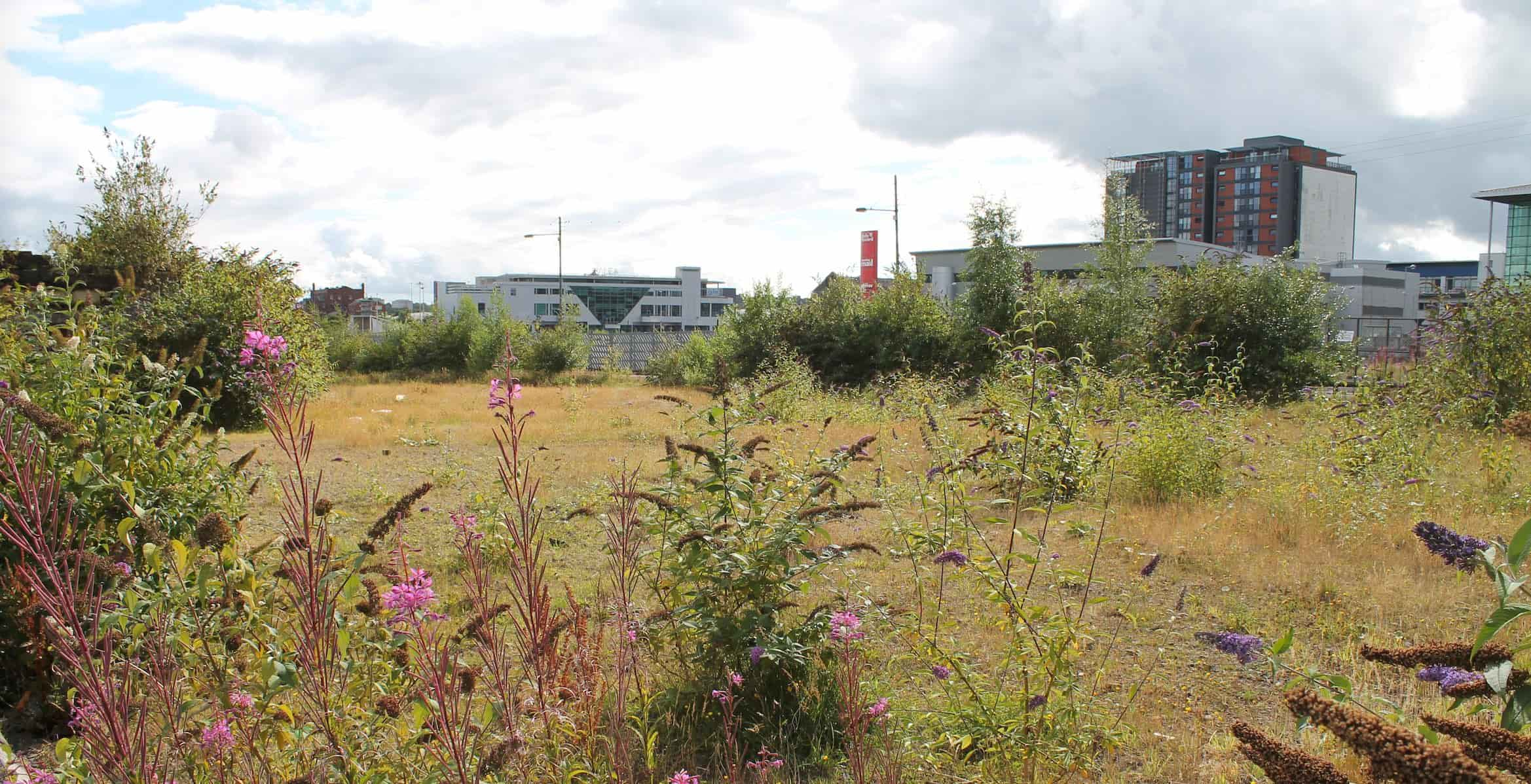The value of vacant and derelict land

We are publishing a series of blogs on designing for a changing climate. In this blog, Shona Glenn from the Scottish Land Commission writes about the potential of vacant and derelict land in tackling the climate emergency.
Reduce, reuse, recycle is a familiar mantra that is quickly becoming a life habit for anyone with even a passing concern about the future of our planet. Reusable grocery bags and regular trips to the bottle bank are now standard practice for most of us.
But the circular economy principles underpinning these good habits have not yet filtered through to our approach to land. While we may now balk at the idea of single-use plastics, we do not think twice about treating land as a disposable commodity.
Scotland has about 11,000 hectares of vacant and derelict land and much of it has been in its present condition for decades, a legacy of Scotland’s industrial past. But this legacy was not inevitable and is not irreversible. It emerged because for too long we have been too ready to accept that once a site is no longer required it is okay to simply walk away. It is not.
Reusing Scotland’s legacy of vacant and derelict land could make a huge contribution to the country’s efforts to tackle climate change. Traditional arguments for urban densification and the role this could play in reducing transport emissions are convincing. But the benefits go far beyond this.
Repurposing vacant spaces for community growing could help us to significantly reduce food miles, while simultaneously enhancing physical and mental wellbeing for local residents. A good example of what is possible is the Shettleston Growing Project.
Or how about using some of those sites to generate renewable energy? Here a good example of this kind of thinking is Greenspace Scotland’s Park Power project. It seeks to harness the renewable energy generation potential of urban parks.
Public intervention
Projects like this prove that change is possible. So why do we still have so much vacant and derelict land?
A big part of the reason is our current market-driven approach to designing places. It is an approach that puts corporate profit before public interest by effectively delegating placemaking to the private sector. If we are serious about tackling climate change then this needs to change.
Vacant and derelict land is difficult to address. This is particularly the case for sites that have been in their present condition for a long time. They often need complex and expensive remediation and are often in parts of the country where market demand is low.
This is not a good recipe for profit maximisation, so mainstream developers tend to steer clear. It is a classic example of market failure that provides a strong rationale for robust public intervention.
National targets
So where do we start? How about using the forthcoming NPF4 to make sure Scotland’s persistently stuck sites are collectively identified as a national development priority? Or what about setting clear national targets for the reuse of derelict land and strengthening Scottish Planning Policy to prioritise delivery?
Scotland already has an ambitious national target to recycle 70% of waste, but there are no similar targets for the reuse of land. Last year we only managed to bring about 6% of the land on the national register land back into use. We have to do better.
Supporting delivery
But stronger planning policy will not be enough. Simply trying to force the market to prioritise brownfield sites is unlikely to succeed and could result in less development. We also need to align public funding to support delivery.
A good place to start with this would be to recognise the remediation of vacant and derelict land as a priority within the Infrastructure Investment Plan. The application of biodiversity net gain requirements as a way of cross-subsidising the restoration of vacant derelict sites could also help.
But the real game-changer would be if we could embed a new approach to appraising public expenditure that prioritises wellbeing effects over financial returns. The Land Commission will be publishing work setting out what this new approach might look like later this year.
Reduce land dereliction
Changes like this could help to significantly reduce land dereliction in urban Scotland. This could make a major contribution to efforts to address climate change. But it could also go a long way to addressing another major challenge of our time: inequality.
We are constantly told that climate action needs to be a collective endeavour, but we still do not all see this as a priority. According to the Scottish Household Survey, 75% of those living in Scotland’s most affluent neighbourhoods see climate change as an urgent problem. But this number falls to barely half of those living in our most deprived communities.
Looking at the distribution of vacant and derelict land the pattern is reversed: 11% of people in Scotland’s least deprived communities live within 500 meters of a derelict site. But this increases to 58% in our most deprived neighbourhoods. So, if we really want to make climate action a collective priority, then this might be a good place to start.
Image credit: Scottish Land Commission
Share your place-based climate action
We would like to hear from communities and local authorities who are creating carbon conscious places. If you are designing and adapting a place to reduce, repurpose and absorb carbon, please share examples of your work with us.
